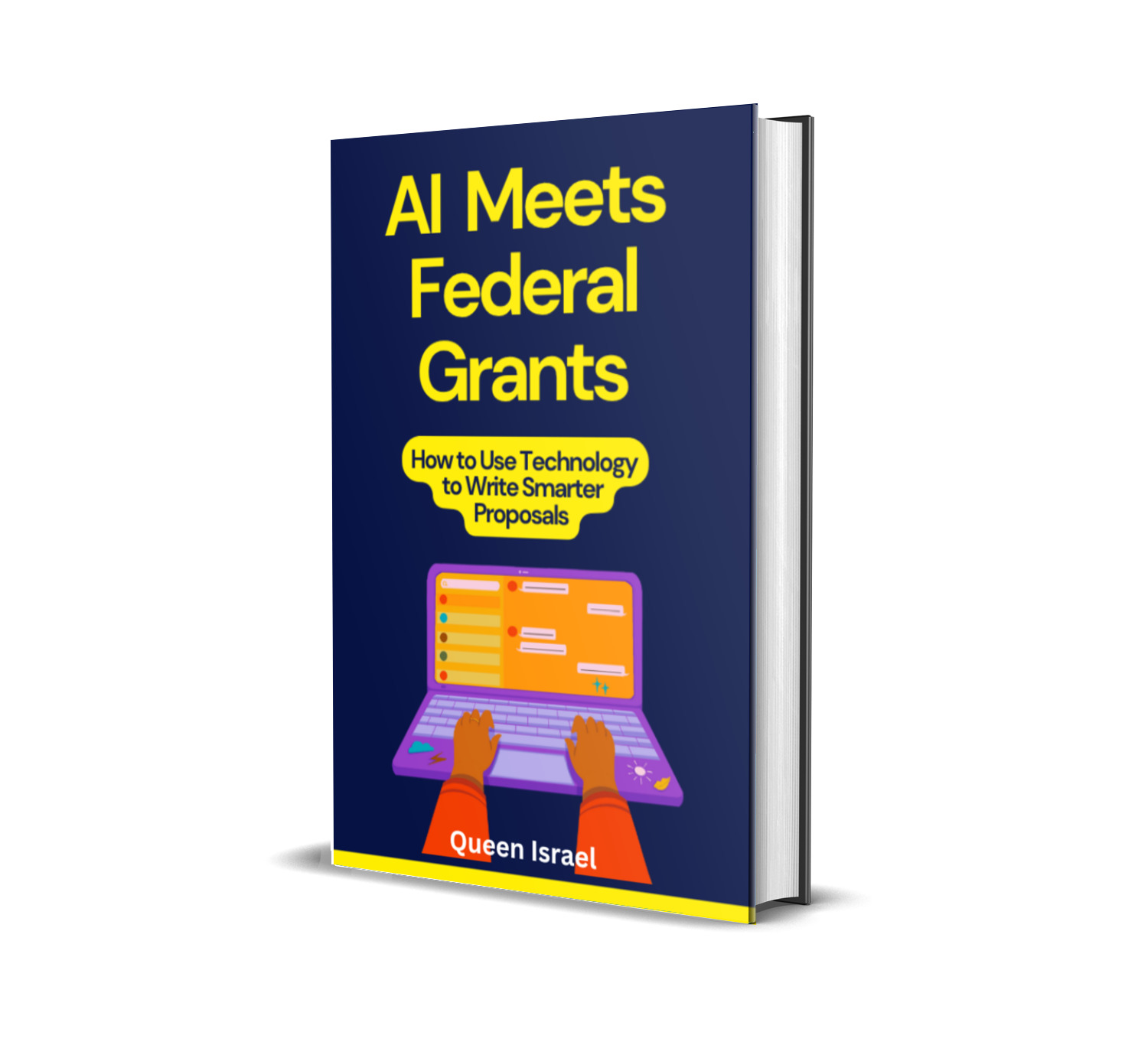When it comes to tackling the environmental issues that disproportionately affect marginalized communities, environmental justice grants are a vital resource.
These grants are designed to address the harmful impact of environmental hazards on low-income and minority populations, ensuring that everyone, regardless of their background or socioeconomic status, has access to a clean and safe environment.
As climate change accelerates, and as we see more extreme weather events and health disparities, securing these grants has become even more crucial for advocacy groups, nonprofits, and community organizations dedicated to environmental and social equity.
In this article, we will dive into what environmental justice grants are, the types of projects they fund, how you can successfully apply for these funds, and why they’re so important for building sustainable, resilient communities. We’ll also touch on common pitfalls in grant writing and how to avoid them.
What are Environmental Justice Grants?
Environmental justice grants are financial resources provided to nonprofits, community organizations, and sometimes government entities to address environmental challenges that primarily affect disadvantaged communities.
These grants aim to reduce the negative impacts of pollution, climate change, and environmental degradation in these vulnerable populations. They are more than just funds; they are catalysts for change, providing communities the power to enact sustainable, health-focused solutions in areas where such needs have been historically overlooked or neglected.
These grants often target projects that:
- Improve air and water quality.
- Mitigate the effects of climate change.
- Promote renewable energy.
- Enhance waste management.
- Educate communities on environmental health.
- Advocate for policy changes.
The EPA’s Office of Environmental Justice underscores the philosophy of environmental justice by stating that it is about ensuring “fair treatment and meaningful involvement of all people, regardless of race, color, national origin, or income, with respect to the development, implementation, and enforcement of environmental laws, regulations, and policies.”
This means that the allocation of these grants is aimed at communities which historically have been denied a fair chance to advocate for their environmental rights or voice their concerns in policymaking.
Key Focus Areas for Environmental Justice Grants
Environmental justice grants support a variety of environmental issues that disproportionately affect underserved communities. These areas include:
- Air and Water Quality:
- Poor air and water quality in marginalized communities is a pressing concern.
- Grants might fund air and water monitoring systems, community alert systems, pollution source investigations, and advocacy campaigns.
- Projects could involve installing community air quality sensors, partnering with local universities for water quality assessments, or engaging residents in citizen science projects to document pollution levels.
- Climate Change Mitigation and Adaptation:
- Climate change is having severe impacts on low-income and minority communities, from extreme heat and flooding to food insecurity due to changing agricultural patterns.
- Environmental justice grants help communities develop climate resilience strategies, such as constructing green infrastructures like rain gardens to manage stormwater, building energy-efficient affordable housing, or implementing community cooling centers to combat heatwaves.
- Waste Management and Pollution Cleanup:
- Communities located near hazardous waste sites or industrial areas are often more susceptible to pollution.
- Grants can fund cleanup operations, community education on hazardous materials, and advocacy for stricter regulatory oversight of polluters.
- They may also support innovative recycling and waste reduction programs tailored to the community’s needs.
- Renewable Energy Projects:
- Transitioning to renewable energy can reduce pollution and lower energy costs in communities that are economically disadvantaged.
- Grants might fund community solar projects, energy efficiency retrofits in low-income housing, or training programs in renewable energy installation.
- These initiatives not only reduce environmental harm but also create job opportunities and reduce utility bills, contributing to economic upliftment.
- Environmental Health Education:
- Empowering communities with knowledge about environmental health risks and strategies to mitigate them is a key component of many environmental justice projects.
- Grants can be used to create educational materials, host workshops, or develop curricula for schools to teach children and adults about topics like lead poisoning, pesticide exposure, and the health benefits of clean energy.
- Policy Advocacy and Systemic Change:
- A significant portion of environmental justice grants support efforts to change policies at local, state, and federal levels.
- These programs might work on lobbying for stricter environmental regulations, drafting policy recommendations, or organizing campaigns to bring public attention to environmental injustices.
- By influencing policy, organizations can create lasting changes that extend beyond a single project or grant period.
Types of Environmental Justice Grants
Understanding the different types of environmental justice grants available can help you identify the best sources of funding for your project. There are two main categories of these grants:
1. Government Grants
Many government agencies provide environmental justice funding, particularly at the federal, state, and sometimes local levels. The Environmental Protection Agency (EPA), for instance, is a major provider of these funds. Some key government grant programs include:
- The Environmental Justice Small Grants Program (EJSG):
- Funded by the EPA, this program provides up to $50,000 for projects that address environmental justice issues in local communities.
- It focuses on projects that will directly improve public health and the environment by empowering communities to address their environmental concerns.
- The EPA’s Justice40 Initiative:
- This initiative aims to direct 40% of federal climate and clean energy investments to disadvantaged communities.
- It encompasses a broad range of projects from affordable housing retrofits for energy efficiency, to community-based renewable energy, and climate resilience strategies.
- The goal is not just to mitigate harm but to invest in communities for sustainable development and economic growth.
- Community Climate Change Grants:
- Funded by agencies like the Department of Energy or local government bodies, these grants focus on helping communities adapt to and mitigate the effects of climate change.
- Projects could include constructing seawalls, developing emergency response plans, and implementing energy efficiency and renewable energy solutions.
- State and Local Grants:
- Various states and cities have dedicated funds for local environmental justice projects.
- For instance, states may have programs tailored to address specific local environmental challenges, such as lead paint remediation in older neighborhoods, or improving public transportation to reduce vehicle emissions in high-pollution zones.
2. Private and Foundation Grants
In addition to government funds, numerous private foundations and nonprofits offer grants specifically targeting environmental justice. These foundations often focus on innovative, community-driven approaches. Some notable foundations include:
- The Kresge Foundation:
- This foundation is known for supporting environmental justice and sustainability in low-income communities.
- Projects funded might address issues like urban heat islands, sustainable urban development, or equitable access to green spaces.
- The Surdna Foundation:
- With a focus on sustainable communities, the Surdna Foundation funds projects that connect environmental sustainability with social equity.
- They often support initiatives that address the intersection of climate change, economic inequality, and social justice.
- The Ford Foundation:
- This foundation works on broader systemic issues, and part of its funding goes to environmental justice projects that aim to create long-term policy and social change.
- The Ford Foundation supports advocacy that tackles racial and economic inequality through policy reform, including environmental policy changes.
- Local and Regional Philanthropies:
- Often, local community foundations or regional philanthropies have grant programs focused on environmental justice topics relevant to a specific geographic area.
- These sources can be particularly valuable because they have deep ties to the community and may offer more flexible funding or technical assistance.
How to Apply for Environmental Justice Grants
Applying for environmental justice grants can seem daunting, but with the right approach and preparation, you can improve your chances of success. Here’s a simple step-by-step guide to help you apply:
- Research Available Grants:
- Begin by identifying environmental justice grant opportunities from government agencies, private foundations, and corporations.
- Use online databases like Grants.gov, Foundation Directory Online, and Environmental Grantmakers Association resources to search for current grants.
- Study the eligibility criteria, deadlines, and goals of each grant program to find those that best align with your project.
- Understand the Guidelines:
- Every grant has specific eligibility criteria, objectives, and requirements. Thoroughly read the application guidelines to ensure that your project aligns with the funder’s priorities.
- Check if the grant encourages collaboration with local communities, has a specific geographic focus, or requires particular forms of accountability and reporting.
- Develop a Strong Proposal:
- Your proposal should clearly explain the environmental justice issue your project seeks to address, the goals and outcomes, and how you plan to execute the project.
- Hook Your Readers: Start your proposal or executive summary with a powerful hook. Share a compelling story, striking statistic, or vivid description of the community and its challenges. For example, “In the heart of [Community Name], children play under a sky tinged by pollution—this is the reality we aim to change.”
- Detail the project’s significance, methodology, timeline, and expected outcomes. Connect your project directly to the needs of the community and the objectives of the grant program.
- Incorporate Data and Evidence:
- Use data to support your application. This can include environmental statistics, health data, or case studies showing the need for your project.
- Visual aids like maps, graphs, and infographics can help illustrate the environmental challenges and the potential impact of your project.
- Cite reputable sources such as EPA reports, academic studies, and local health department data to bolster your case.
- Create a Realistic Budget:
- Funders want to know that you can manage their money effectively. Provide a clear and detailed budget for your project, outlining how you will allocate funds to key activities.
- Include justifications for each expense, whether it’s for equipment, personnel, community outreach, or evaluation.
- Show how your budget supports the goals of your project while remaining cost-effective and sustainable.
- Engage the Community:
- Many environmental justice grants require community involvement in the planning and execution of projects.
- Be sure to involve local residents and stakeholders in the development of your project, demonstrating that it is a community-driven effort.
- Include letters of support from community members, local leaders, or partner organizations to show genuine community backing.
- Proofread and Review:
- A well-written proposal is essential to securing funding. Proofread your application for clarity, accuracy, and completeness.
- Consider having someone not affiliated with the project review your proposal to catch errors and provide feedback.
- Make sure all required documents, attachments, and certifications are included and submit your proposal well before the deadline.
- Follow Up:
- After submitting your proposal, don’t be afraid to follow up with the funding agency to confirm receipt and inquire about the timeline for decisions.
- If your proposal is unsuccessful, ask for feedback and use it to improve future submissions.
Common Pitfalls in Grant Applications and How to Avoid Them
Even well-intentioned proposals can fall short if they stumble into common pitfalls. Here are some to watch out for:
- Lack of Clarity: Avoid jargon and overly complex language. Be clear and straightforward, keeping the reader engaged and informed.
- Misaligned Objectives: Ensure that your project fits perfectly within the funding organization’s mission and objectives. Tailor your proposal specifically for each grant rather than using a generic template.
- Insufficient Data: Failing to back up claims with data or evidence can weaken your proposal. Always substantiate your needs and projected outcomes.
- Overly Ambitious Scope: While ambition is good, a project that is too broad may seem unrealistic. Focus on specific, achievable outcomes.
- Inadequate Budgeting: Unrealistic or poorly justified budgets can be a red flag. Provide detailed budgets with clear reasoning for each expense.
- Failure to Engage Stakeholders: Not demonstrating community involvement or support can undermine your proposal. Highlight how your project includes and benefits the community.
- Poor Grammar or Formatting: Spelling mistakes, grammatical errors, or formatting issues can detract from an otherwise strong proposal. Edit thoroughly.
Success Stories and Impact of Environmental Justice Grants
Several successful projects have demonstrated the power of environmental justice grants in creating positive change. By sharing these stories, we can see how strategic funding leads to tangible improvements in communities and serves as inspiration for future projects.
Case Study 1: Greenlining Institute
The Greenlining Institute received funding to support its work advocating for environmental justice policies in California’s most polluted communities. Using environmental justice grants, they were able to:
- Develop community-based monitoring programs to track local air and water quality.
- Organize public forums bringing together residents, policymakers, and scientists to discuss solutions.
- Launch educational campaigns around renewable energy and energy efficiency.
These efforts contributed to policy changes at the local level, such as tighter regulations on industrial emissions and increased funding for community health initiatives.
Case Study 2: Environmental Defense Fund (EDF) and Toxic Air Pollution
The Environmental Defense Fund (EDF) partnered with local communities affected by industrial pollution. With the help of environmental justice grants:
- EDF installed air quality sensors in neighborhoods near factories to collect real-time data.
- The data was used to file lawsuits and pressure industries to reduce emissions.
- Community workshops taught residents how to read and use the data to advocate for policy changes.
As a result, some neighborhoods saw significant reductions in toxic air pollutants, leading to improved respiratory health outcomes and a stronger voice for residents in environmental decision-making.
Data and Stats on Environmental Justice
- Environmental Justice and Health: A report from the American Public Health Association (APHA) notes that low-income communities and communities of color are exposed to higher levels of pollution, resulting in increased rates of asthma, heart disease, and cancer. For example, children in these communities are 50% more likely to suffer from asthma than those in more affluent areas.
- Climate Change and Vulnerable Communities: According to the National Climate Assessment, communities of color and low-income communities are disproportionately affected by climate change, particularly by extreme weather events, rising sea levels, and flooding. Data from the Climate and Clean Energy Fund indicates that by 2050, failing to mitigate these effects could push millions into environmental distress.
- Funding for Environmental Justice: According to a study by the Environmental Grantmakers Association, environmental justice funding from foundations has increased by 20% in the past five years, showing a growing recognition of the importance of these issues. However, demand still outstrips supply, making grant writing skills and strategic planning more important than ever.
Why Environmental Justice Grants Matter
Environmental justice grants are more than just financial support; they are tools for creating real, lasting change. By securing these funds, organizations can empower communities to address systemic environmental issues and reduce the disproportionate impact of climate change, pollution, and other environmental hazards.
These grants are essential for:
- Building equitable, sustainable communities.
- Addressing the needs of populations that have long been left out of the conversation about environmental protection.
- Providing immediate relief and long-term solutions to environmental health hazards.
- Empowering communities with knowledge, resources, and a voice in local, state, and federal environmental policy.
The Role of the Grant Writing Academy Newsletter
For those looking to make a substantial impact in the realm of environmental justice, having access to expert advice, tools, and resources can make a world of difference. That’s why subscribing to the Grant Writing Academy Newsletter is so beneficial.
In our newsletter, you’ll find:
- Tips and Strategies: Learn the nuances of effective grant proposals, from crafting a compelling narrative to creating a realistic budget.
- Templates and Tools: Access ready-to-use templates, checklists, and planning tools to streamline your grant application process.
- Case Studies: Learn from real-life success stories and apply those lessons to your projects.
- Latest Updates: Stay informed about new grant opportunities, changes in funding priorities, and relevant policy updates that could impact your proposals.
By subscribing, you not only enhance your grant writing skills but also become part of a community of like-minded professionals committed to driving environmental justice through effective funding strategies. Whether you’re a nonprofit leader, a community organizer, or someone passionate about making a difference, our newsletter can empower you with the knowledge and tools needed to secure the funding that will turn your vision into reality.
Additional Resources and Support
a) Expand Your Knowledge
The grant writing field is always evolving. Keep learning and improving your skills to stay competitive.
Recommended Resources:
- Request for Proposal Success: How to Write Proposals That Win: Learn the techniques and strategies to create standout proposals.
- Tech Startup Funding Secrets: Navigating Grants for Maximum Growth: Perfect for those in the tech sector looking to leverage grants for scaling.
- Grant Proposal Guide for Environmental Projects: Tailored for environmental initiatives seeking to secure impactful funding.
- The Ultimate Guide to Federal Grant Applications: Techniques for Success: Master the complexities of federal grants with actionable insights.
Explore More Books Here
b) Invest in Expert Guidance
Want to fast-track your growth and achieve even more success?
Join one of our mentorship programs for tailored advice and support:
Mentorship Programs:
- 3-Month Mentorship: The Foundation Builder: A short-term plan to refine your grant writing skills and win your first (or next) grant.
- 6-Month Mentorship: The Proposal Pro: Dive deeper into strategies, proposal reviews, and funding plans.
- 1-Year Mentorship: The Funding Champion: Build long-term success with comprehensive guidance, unlimited reviews, and exclusive resources.
C) Book a One-on-One Consultation
Sometimes you just need personalized advice to tackle challenges or fine-tune your strategy. Let’s work together to solve your unique grant writing challenges.
Book a Consultation Call Here
Conclusion
Environmental justice grants are a powerful mechanism for enabling communities to combat environmental hazards and promote sustainable, equitable growth. By understanding the nuances of what these grants offer, how to align your project with funding priorities, and how to craft a compelling, data-backed proposal, you can significantly enhance your chances of success.
Remember, effective grant writing is not just about securing funds—it’s about telling a story that resonates, backed by data, community support, and a clear plan for positive change. This approach not only attracts funders but also builds trust within your community, laying the groundwork for successful project implementation and long-term sustainability.
To ensure you’re up-to-date with the latest strategies, templates, and insider tips on how to win grants for environmental justice, subscribe to the Grant Writing Academy Newsletter today.
Let us help you navigate the complex world of grant writing and secure the funds necessary to bring about the change your community needs.
Subscribe now and take the first step toward transforming your environmental justice projects into impactful, well-funded initiatives.






